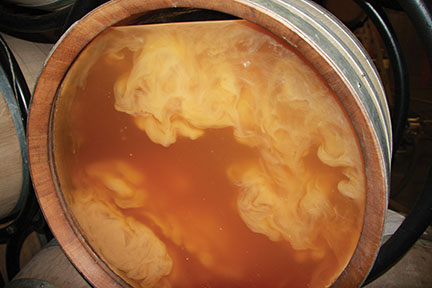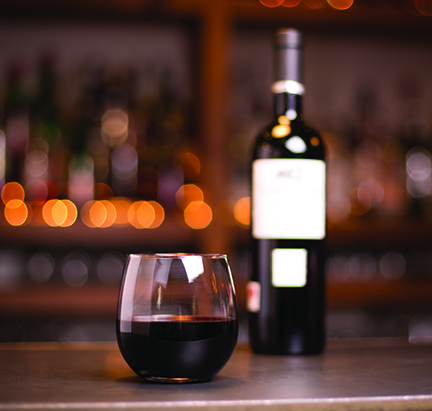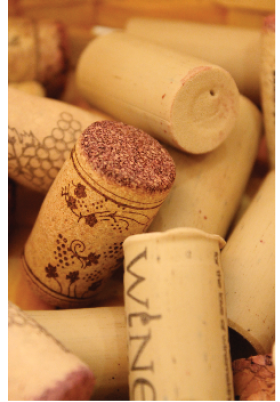
Feel like that Chardonnay you racked after a week of fermentation last fall is a little thin, or is lacking aromatic complexity? The next time you make a batch of a similar Chardonnay, you may want to consider aging sur lie.
What is sur lie?
Sur lie (pronounced “sewr lee”) is French for “on the lees.” If you are unfamiliar with the term, “lees” is the sludge-like sediment that falls from suspension and collects on the bottom of your fermenter during fermentation. The coarse lees that fall out during the vigorous phase of fermentation is made up of dead yeast cells as well as grape particles including skin fragments, seeds, and pulp and is known as gross lees. Extended contact with gross lees can have a negative effect on your wine including a “rotten egg” smell. However, after racking off of the gross lees, finer particles that fall out of suspension at the tail end of fermentation and during aging is what is known as fine lees, which can contribute positive characteristics. After the yeast has eaten up all the sugar to make alcohol during fermentation, winemakers will sometimes rack (siphon) their wines from their fermenter to another barrel or carboy to allow the wine to age off the fine lees. Another option, however, is to age sur lie by keeping the wine on the lees. This contact with the lees can add complexity to that neutral wine and increase body and favorable flavor compounds.
What wines should be aged sur lie?
Sur lie aging is traditionally used in Chardonnay and Muscadet production in France, but is also used for other white wines that are known to be light, crisp, and more neutral in flavor, such as Chenin Blanc, Pinot Blanc, and Pinot Grigio (Gris), as well as some full-bodied red wines. The fruitiest white wines generally should not be aged sur lie.
Sur lie aging is known to increase mouthfeel, body, and aromatic complexity, while adding flavors often described as “yeasty” or “nutty” in white wines. It also can help prevent the formulation of sulfur-smelling compounds and provide greater protection against oxidative effects. Full-bodied red wines can also benefit from sur lie aging as the process helps stabilize color and add mouthfeel. All this happens because as the dead yeast cells break down (a process known as autolysis) they release mannoproteins and polysaccharide compounds that can have positive effects on wines. Mannoproteins add a creamy mouthfeel and can increase wine aromas, but also bind to tannins, which decrease astringency in red wines.
How to sur lie age
Sur lie aging isn’t as simple as just leaving your fermented wine on the lees. There is one other important step: Bâtonnage, which is a French term for stirring the lees. The lees must be stirred for several weeks — and up to a year or even longer — in order to be effective. How often the lees should be stirred differs depending on which winemaker you ask, but more frequent stirring is most necessary immediately after fermentation. In his book Techniques in Home Winemaking, Daniel Pambianchi suggests daily stirring to start and then tapering down to weekly stirring by the end. He also recommends maintaining an adequate free SO2 level based on pH and temperature during the sur lie aging period between 64–68 °F (18–20 °C). You should also consider adding specifically formulated enzymes for sur lie aging to help and accelerate the breakdown of yeast cell walls.
When stirring the lees (with a sanitized bâtonnage cane, stirring rod, or other device) do so thoroughly enough to stir the lees back into suspension but gently enough as not to hasten oxidative effects. Done correctly, after about a year of aging on the lees your next batch of Chardonnay should be much more complex than that last batch.
Alternatively, if you find you don’t have sufficient lees to sur lie age, you can add enological mannoproteins for that increased mouthfeel and improved color (in reds).






